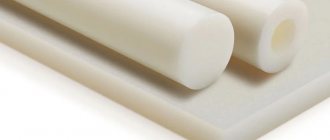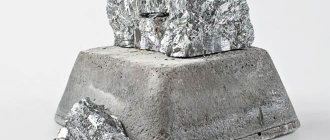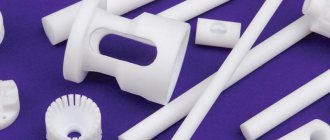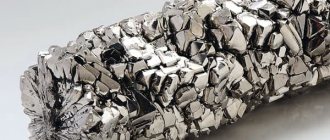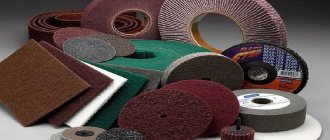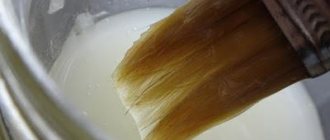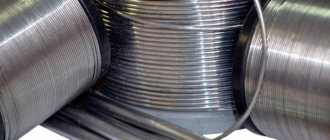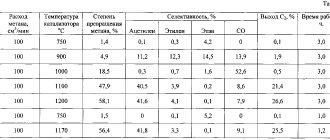Kerosene is a flammable fraction of oil, a transparent liquid with an oily structure and a light yellow color. The liquid flammable carbons from which it consists are distinguished by a very high boiling point, from +150°C to +250°C. The characteristics and flammable properties of this petroleum product allow it to be used for refueling aircraft and automobile equipment, devices used for lighting, and stoves.
The ancient Greek word "Kηρóς", meaning wax, gave its name to kerosene.
Ecology for the corn farmer
Together with scientists from the All-Russian Research Institute for Petroleum Refining, the company’s specialists began developing a formulation of unleaded fuel with an octane rating of 91 in 2014, and this work has now been completed. Its result was the appearance of not even one, but two compositions. The first received the designation B-92/115 - for the Russian market. In terms of its characteristics, it fully complies with GOST leaded fuel B-91/115. The second is an analogue of unleaded aviation gasoline 91UL (ASTM D 7547), for which many leading manufacturers are now developing engines, such as, for example, one of the world leaders in this segment, Austrian Rotax.
Petr Degtyarev, Director of the Oil Refining Directorate, Gazprom Neft:
“The work on 91st gasoline has been completed, applications for three patents have been submitted, one has already received confirmation, the other two are still at the examination stage,” said Valery Golovachev, chief specialist of the technical policy and innovation activities department of the oil refining and petrochemical development department of Gazprom Neft. “Russian and European normals do not differ much in composition, so production of the entire volume is planned to be located at one site at the Omsk Refinery.”
However, developing the fuel is half the battle. Even the best gasoline that meets all standards cannot be sold unless aircraft engine manufacturers have certified it for use in their products. This is what the Gazprom Neft refining directorate and the All-Russian Research Institute of NP are now doing, starting, of course, with enterprises that produce engines for the An-2 in Russia and Poland. Negotiations in this direction are also ongoing with Rotax. However, only half of the piston aircraft registered in the country can operate on 91-grade aviation gasoline. This is also reflected in statistics: 54% of sales of specialized fuel for piston aircraft engines are 100LL gasoline. Therefore, the company has already begun preparations for a new project, within the framework of which it is planned to develop an unleaded analogue of 100-grade aviation gasoline, and Omsk Refinery, as an industrial partner, has submitted an application to participate in the tender of the Ministry of Education and Science of the Russian Federation for the development of such fuel.
Aviation gasoline standards
According to GOST 1012–2013, aviation gasolines are produced in the following grades:
— aviation gasoline B-91/115. Designed for operation of the ASh-62IR, AI-26V, M-14B, M-14P and M-14V-26 engines.
— aviation gasoline B-92. Supplied under state defense order. Developed as a result of a large set of tests as a single gasoline without standardization of the “grade on a rich mixture” indicator, under certain conditions it can be used instead of B-91/115 gasoline.
Currently, the most widely used imported gasoline with reduced lead content in Russia is Avgas 100LL. This is the main fuel for foreign aircraft, including such common helicopters as R-22, R-44, Cessna-172 aircraft and other types.
Temperature - flash - petroleum product
The flash point of petroleum products does not obey the law of additivity.
The flash point of a petroleum product depends on the design of the device used and the method of working on it. Flash point without specifying the method of determination is not a characteristic of a petroleum product. GOST standards usually indicate on which device the flash point was determined. To determine the flash point, closed and open type devices are used.
The flash point of petroleum products depends on their initial boiling point: the lower the initial boiling point of the liquid, the lower the flash point. C, which means they are flammable in the hot season; oil fractions are characterized by a flash point in the range of 130 - 325 C and are therefore less flammable. Therefore, flash point is an indicator of the flammability of a liquid.
The flash point of petroleum products is the temperature at which their vapors mixed with air flare up when a flame approaches. This temperature is much lower than the ignition temperature at which the liquid ignites without the application of a flame.
The flash point of a petroleum product depends on the design of the device used and the method of working on it and is determined precisely under the conditions established by GOST. To determine the flash point, closed and open type devices are used.
The flash point of a petroleum product cannot be corrected according to the specified formula, since an insignificant admixture of an easily evaporating product reduces the flash point of the mixture to a value close to the flash point of an easily evaporating petroleum product.
The flash point of a petroleum product cannot be corrected according to the specified formula, since an insignificant admixture of an easily evaporating product reduces the flash point of the mixture to a value close to the flash point of a highly evaporating petroleum product.
The flash point of petroleum products is determined in laboratory conditions in open or closed type instruments. The first type includes the Brenken apparatus, the second - the Abel-Pensky and Marten-Pensky apparatus.
The flash point of a petroleum product is the temperature at which the vapors of a petroleum product, heated under strictly defined conditions, flare up when a flame is applied.
The flash point of a petroleum product is the temperature at which the elasticity of its vapor is sufficient to form a mixture of vapor and air above the surface of the liquid in a special device, which flares up when a flame is applied.
The flash point of petroleum products is the lowest temperature at which a mixture of petroleum product vapors and air flares up when a flame is brought to it and then goes out. Liquids with a flash point below 45 C are called flammable, and liquids with a flash point above 45 C are called flammable.
The flash point of a petroleum product is the lowest temperature at which its vapors mixed with air, when a spark is brought to them, flare up and immediately go out.
Monitoring the flash point of petroleum products is one of the most common analyzes in oil refineries. It accounts for the largest share both in terms of the number of analyzes (up to 20) and in terms of labor costs (up to 25/b) of the total number of all types of analysis.
The flash point of a petroleum product is used to judge the possibility of the formation of explosive mixtures of its vapors with air. There are lower and upper concentration limits of explosion of a mixture of petroleum product vapors and air. If the concentration of petroleum product vapor is less than the lower explosive limit, an explosion does not occur, since the available excess air absorbs the generated heat and prevents the remaining parts of the fuel from igniting. When the concentration of fuel vapor and air is above the upper limit, an explosion also does not occur, but due to a lack of oxygen in the mixture.
The flash point of a petroleum product is used to judge the possibility of forming explosive mixtures of its vapors with air. A mixture of vapors and air becomes explosive when the concentration of fuel vapors in it reaches certain values. In accordance with this, the lower and upper limits of explosion of a mixture of petroleum product vapors and air are distinguished. If the concentration of petroleum product vapor is less than the lower explosive limit, an explosion does not occur, since the available excess air absorbs the heat released at the initial point of the explosion and thus prevents the ignition of the remaining parts of the fuel. When the concentration of fuel vapor in the air is above the upper limit, an explosion does not occur due to a lack of oxygen in the mixture.
Kerosene. solvents. solid hydrocarbons
Category: Chemical composition of non-food products
Kerosene is a mixture of hydrocarbons with the number of carbon atoms from 9 to 16. Depending on the chemical composition and method of refining the oil from which kerosene is obtained, its composition includes: saturated, unsaturated, naphthenic, bicyclic aromatic hydrocarbons.
Basic physical and chemical properties of kerosene
Viscosity at 20 °C…………………1.2 - 4.5 mm2/s
Density at 20 °C…………….. 780 - 850 kg/m3
Flash point…………… 28 – 72 °C
Heat of combustion…………………..42.9 – 43.1 MJ/kg
Kerosene is used as jet fuel (aviation), as a component of liquid rocket fuel, for technical purposes (for example, as fuel in ceramic production).
Household lighting kerosene is intended for lamps, kerosene stoves, kerosene gases and kerosene stoves, and heaters. It is made from directly distilled petroleum products. To ensure the required height of a non-smoking flame, lighting kerosene must contain a minimum amount of aromatic hydrocarbons, as well as resins and naphthenic acids (clog the pores of the wicks), sulfur, which ensures the absence of harmful substances during combustion.
Brands of lighting kerosene - K0-20, KO-22, KO-25, KO-30 - differ in the density and height of the non-smoking flame. The flash point is standardized and is not lower than 48 °C for KO-Z0, and not lower than 40 °C for other brands. For technical purposes, use kerosene with a flash point of at least 28 °C.
Solvents are widely used in the rubber industry for the production of adhesives, as well as in the paint and varnish industry for the production of varnishes and oil-based paints. In addition, they are used for washing parts during equipment repair, dry cleaning of clothing, in the production of synthetic leather, etc. Solvents include gasoline solvents, petroleum solvent and petroleum ether.
Solvent gasoline for the rubber industry is a dearomatized, low-boiling fraction from direct petroleum distillation or catalytic reforming. Brand BR-2 is produced from catalytic reformed gasoline, brand BR-1 (“galosh”) is produced from gasoline fraction of direct distillation of oil. According to sanitary conditions, the content of aromatic hydrocarbons in these brands should not exceed 3%.
Solvent gasoline for the paint and varnish industry (white spirit) is made from straight petroleum gasoline (165 - 200 ° C). The content of aromatic hydrocarbons in it reaches 16%. Gasoline for industrial and technical purposes has a wider fractional composition (45-170 °C). The content of aromatic hydrocarbons in it is not standardized.
Petroleum solvent for the paint and varnish industry is a mixture of aromatic hydrocarbons obtained from the pyrolysis of petroleum fractions. Used in the production of varnishes, paints and enamels.
Petroleum ether is a mixture of methane hydrocarbons and is obtained from products of direct distillation, alkylation and synthesis of hydrocarbons. It is produced in two grades: 40-70 and 70-100 (the numbers correspond to the boiling point limits).
Currently, the generally accepted names of solvents have been replaced by standardized ones: nefras - petroleum solvent; C - mixed hydrocarbons, P - paraffin, N - naphthenic, A - aromatic, I - isoparaffin; 4 - subgroup (except for aromatic ones) based on the content of aromatic hydrocarbons (six subgroups in total); 155/200 - temperature of the beginning and end of boiling of the product.
The range of petroleum solvents includes:
Nefras S2-80/120 - gasoline solvent for the rubber industry;
Nefras SZ-80/120 - gasoline solvent for technical purposes;
Nefras S-50/170 - gasoline solvent for the paint and varnish industry (white spirit);
Nefras A-130/150 - petroleum solvent;
Nefras A-120/200 - heavy oil solvent;
Nefras SZ-70/95 - straight-run extraction gasoline;
Nefras S2-70/85 - extraction gasoline;
Nefras SZ-105/130 - gasoline solvent for the forestry industry;
Nefras P4-30/80 - petroleum ether fraction;
Nefras SZ-94/99 - heptane solvent;
Nefras S4-150/200 is a substitute for white spirit;
Nefras P1-63/75 - hexane solvent;
Nefras P1-65/70 - hexane solvent;
Nefras N2-220/300 is a technological solvent for the Alfol process;
Nefras I2-190/320 - solvent for household insecticides;
Nefras A-150/330 is a petroleum aromatic solvent.
The most important operational properties of petroleum solvents are:
• ability to dissolve organic compounds;
• ability to remove organic contaminants from the surface of metals;
• ability to evaporate quickly;
• ability for minimal deposition of its components;
• lack of corrosiveness, which is determined by the presence of sulfur compounds in solvents;
• quality stability, characterized by a guaranteed shelf life;
• degree of toxicity.
Quality indicators of petroleum solvents - density, fractional composition, sulfur content, aromatic and naphthenic hydrocarbons.
Solid hydrocarbons include paraffins and ceresins.
Solid petroleum paraffins are crystalline substances - fatty hydrocarbons with the number of carbon atoms from 19 to 35. Depending on the depth of purification, they are white or slightly yellowish and from light yellow to light brown (unrefined paraffins). Paraffins are widely used in electrical engineering, food, perfumery, cosmetics and other industries. They are the most important raw material source for the production of fatty acids. The food industry uses deep purification paraffins; for the production of candles, matches and other products - Hc paraffin (petroleum match).
The main indicators of paraffin quality: appearance, density, melting point, mass fraction of oil, water content, flash point, auto-ignition temperature.
Ceresins are a mixture of paraffin hydrocarbons with the number of carbon atoms per molecule from 36 to 55. They are obtained from natural raw materials or produced synthetically from carbon monoxide and hydrogen. The natural raw material is natural ozokerite (mountain wax) - natural petroleum bitumen. This is a mixture of solid saturated hydrocarbons of yellow, brown, greenish color. Ceresin is a homogeneous mass without noticeable mechanical impurities with a dropping point of 80 - 85 ° C.
Various compositions are made based on ceresin in the household chemicals industry. It is also used as a thickener in the production of greases, insulating material in electrical and radio engineering, and wax compounds.
Main indicators of the quality of petroleum products and methods for their determination in accordance with current regulatory documents
| Indicators | Product | Method | GOST |
| Anti-corrosion properties | Lubricating oils | Corrosion testing of carbon steel rods in the presence of water or a solution of inorganic salts at a temperature of 60°C | 19199-73 |
| Bromine number and unsaturated hydrocarbons g- | Light petroleum products | Electrometric titration with bromide bromate solution | 8997-89 |
| Water (content) | Petroleum products | Distillation of water from a sample using a solvent (gasoline fraction 80-120°C) | 2477-65 |
| Water-soluble acids and alkalis (availability) | » | Extraction of a sample with boiling water and determination of dry mass after evaporation of the water extract | 6307-75 |
| Viscosity: | |||
| kinematic (definition) and dynamic (calculation) | » | Using capillary viscometers VPZh-1, VPZh-2, VPZh-4, VPZh and VPZhM and Pinkevich | R 33-2000 |
| dynamic | Liquid petroleum products | Automatic capillary viscometer AKV-4 | 7163-84 |
| efficient | Same | Same | 7163-84 |
| conditional | Greases | Viscometer VU | 6258-85 |
| dynamic at temperatures from 0 to minus 60 °C | Petroleum products | Rotational viscometer | 1929-87 |
| Needle penetration depth | Petroleum bitumens, paraffins | Change in the depth of immersion of the penetrometer needle into the test sample at a given load, temperature and time | 11501-78 |
| Saturated steam pressure | Petroleum products, oils and lubricants | Determination of saturated vapor pressure depending on temperature is carried out in a special device at a residual pressure of 267-400 Pa (2-3 mm Hg) | 15823-70 R 1756-2000 |
| Ash content | Oil and petroleum products | Combustion and calcination in a crucible to constant mass | 1461-75 |
| Change in mass after warming up | Petroleum bitumens | Determination of the mass of a bitumen sample after heating at 163 °C for 5 hours | 18180-72 |
| Volatility | Greases | Determination of mass loss when heating a sample in evaporation dishes | 9566-74 |
| Acid number and water-soluble acids | Lubricating and special oils | Acid number - titration of a sample in a solvent (alcohol, benzene and blue 6 V) with an alcoholic solution of potassium hydroxide. Water-soluble acids - boiling a sample of oil with water, titrating an aliquot of the aqueous extract with KOH | 13243-67 |
| Acidity and acid number | Petroleum products | Titration of a sample of 0.05 N. KOH solution | 5985-79 |
| Neutralization number | Petroleum products and lubricants | Potentiometric titration | R 11362-96 |
| Water-soluble acids and alkalis; (Availability) | Petroleum products | Extraction of a sample with water or a water-soluble solution; determination of pH of aqueous extract | 6307-75 |
| Coking by the Conradson method Coking ability on the LKH apparatus | » | Combustion and calcination of the product in a porcelain crucible placed in two metal crucibles equipped with lids Combustion and calcination of the product in heat-resistant glass crucibles in the LKH-70 device | R 19932-99 8852-74 |
| Corrosive effect on metals | Oils and additives | Keeping a metal plate in the test product at elevated temperatures and determining the nature of the corrosive effect | 2917—76 |
| Greases | Accelerated method: ground metal plates are immersed in glasses with lubricant; the test is carried out for soap-based lubricants depending on the melting point at 100-75 ° C and below for 3 - 5 hours | 9.080-77 | |
| Corrosive properties and oxidation | Motor oils | A laboratory PZZ installation that simulates the operation of oil in the engine lubrication system (circulation, heating, contact with various metals). Determination of sediment and mass loss of lead plates | 13300-67 |
| Corrosive properties | Same | Testing a prototype oil on the YaAZ-254 engine for 125 hours | 20302-74 |
| Masses, measurement methods | Petroleum products | Precipitation of paraffin from the fraction above 250 °C with a mixture of alcohol and ether at minus 20 °C | 26976-86 |
| Mechanical impurities: are common | Petroleum, petroleum products and additives | Soluble samples in a solvent (B-20 gasoline, petroleum ether, benzene, alcohol-benzene mixture) and separation of mechanical impurities by filtration | 6479-73 |
| fireproof | Light petroleum products | Ashing of general mechanical impurities, filtration through a membrane filter | 10577-78 |
| Mechanical impurities determined during the decomposition of the product with hydrochloric acid | Greases | Soluble lubricants in a mixture of solvents: benzene, ethyl alcohol and carbon tetrachloride; decomposition 2%, determination of sediment mass | 6479-73 |
| Soap, mineral oils and high molecular weight organic acids (contents) | Same | Soluble lubricants in benzene; precipitation of soap with acetone; separating oil from soap; determination of free acids by titration of oil and of bound acids by titration after soap decomposition | 5211-85 |
| Penetration | » | Determination of the depth of immersion of a standard cone into the test lubricant for 5 s | 5346-78 |
| Density | Petroleum products | Hydrometers, hydrostatic balances, pycnometer | 3900-85 |
| Tensile strength and heat strengthening | Greases | Measuring maximum torque using the SK strength meter | 7143-73 |
| Solubility in benzene, chloroform, trichlorethylene | Petroleum bitumens | Dissolution by reflux, filtration; washing the filter, determining the mass of the dried residue | 20739-75 |
| Extensibility (ductility) | Same | Determination of the maximum stretching length of bitumen poured into a standard mold at 25°C and 0°C and a constant stretching rate of 5 cm/min | 11505-75 |
| Sulfur (content): crucible smelting | Petroleum products, additives | Burning a sample with a mixture of manganese peroxide and sodium carbonate, dissolving sulfides in water, determining sulfur by volumetric chromium method | 1431-85 R 51859-2000 |
| burning in air | Dark petroleum products | Burning the sample in a stream of air; trapping combustion products with hydrogen peroxide and sulfuric acid; titration with NaON solution. Burning in a lamp; trapping S02 with Na2C03 solution; titration with hydrochloric acid | 1437-75 |
| burning in a lamp burning in a bomb | Light petroleum products Heavy petroleum products | Lamp method Burning a sample in a bomb (calorimetric); sedimentation of washout with BaCl2 solution, gravimetric determination of sediment | 19121-73 3877—88 |
| Tendency to slip | Greases | The ability of a lubricant layer not to slide off a smooth vertical metal surface at a given temperature | 6037-75 |
| Lubrication properties (tribological characteristics) | Liquid and plastic lubricants | Testing on a four-ball machine at specified axial loads and determining the scuff index, critical load, weld load and wear index | 9490-75 |
| Resins (contents) | Petroleum oils | Adsorption of resins by silica gel from benzene solution; their desorption with acetone | 15886-70 |
| Mechanical stability | Greases | Determination of changes in tensile strength as a result of intense deformation of the lubricant in the taximeter | 19295-73 |
| Stability against oxidation | Same | The lubricant is applied to a standard copper plate and kept for 10 hours at 120 °C; Free acids and alkalis are determined (after testing). | 5734-76 |
| Same | Mineral oils | Comparison of oil quality indicators before and after oxidation in a universal device, including neutral glass test tubes in which metal plates are placed; oxidation is carried out by oxygen or air. | 18136-72 |
| » | Petroleum oils | Determination on a VTI device of volatile acids, acid number and mass of sediment during oxidation with air under the conditions specified in the regulatory and technical documentation | 981-75 |
| Thermal-oxidative stability | Lubricating oils | According to the Folder method on evaporators; the oil, located in a thin layer on plates, is heated to a given temperature and transformed into a residue consisting of 50% varnish. Using the Folder method, the time is determined at which the resulting varnish film is able to hold the ring when it is torn off with a force of 1 kgf | 23175-78 |
| Flash point: closed cup | Petroleum products, chemical and organic products | Heating and fixing the flash point from the flame of an incendiary device | 6356-75 |
| in an open crucible | Dark oils and petroleum products | Heating and recording the flash point and ignition temperature from a gas burner flame | 4333-87 |
| Pour and pour point | Petroleum products | Preheating a sample followed by cooling to a temperature at which the sample remains stationary | 20287-91 |
| Dropping point | » | Determining the temperature at which the first drop comes off from a special cup attached to the thermometer, or the temperature at which this drop touches the bottom of the test tube | 6793-74 |
| Softening temperature for ring and ball | Petroleum bitumens | Determination of the temperature at which bitumen located in a brass ring, when heated under the action of a ball weighing 3.5 g, is squeezed out and touches the control disk (base of the apparatus) | 11506-73 |
| Factional composition | Oil and petroleum products | Distillation from a standard device | 2177-99 |
| Distillation with rectification in the apparatus ARN-2 | 11011-64 | ||
| Gradual evaporation on cups | 8674-58 | ||
| Saponification number | Petroleum oils | Boiling the sample in a mixture with alcohol, toluene and titrated KOH solution; back titration of HC1 | 17362-71 |
| Color(definition) | Petroleum products | On a Saybolt chromometer | 2667-82 |
| Light petroleum products | R 51933- 2002 | ||
| Cetane number | Diesel fuel | — | 3122-67 |
Vaseline, an alloy of paraffin, ceresin and perfume oil, has become widespread in the perfumery, cosmetics, medical and electrical industries.
Jet fuels
Main article: Jet fuel
Kerosene is a fraction of oil that boils away mainly in the temperature range of 200-300 ° C. Jet fuel, fuel for aviation jet engines, are usually kerosene fractions obtained by direct distillation from low-sulfur (for example, T-1) and sulfur (TS-1 ) oils. Currently, straight-run aviation fuel is scarce; hydrotreating and additives are widely used.
Kerosene is used for domestic purposes as heating and motor fuel, a solvent for varnishes and paints. Jet fuel is used as fuel for gas turbine engines of airplanes and helicopters of civil and military aviation, and in addition, fuel on board an aircraft can also be used as a coolant or coolant (fuel-air and fuel-oil radiators), and as a working fluid hydraulic systems (for example, controlling the cross-section of an engine jet nozzle). Jet fuels are also widely used as a solvent during aircraft maintenance and when cleaning contaminants manually or mechanically (for example, in an ultrasonic installation for cleaning filters, jet fuel is used as a working fluid). Aviation jet fuels undergo a total of up to 8 levels of quality control, and in the Russian Federation, in addition, acceptance by a military representative.
For jet fuels, the main quality indicators are:
- mass and volumetric heat of combustion
- fuel thermal stability
- saturated steam pressure
- kinematic viscosity
- compatibility with structural and sealing materials
- carbon deposit and anti-wear properties
- electrical conductivity
- sulfur
- acidity
Jet fuels are produced mainly from middle distillate fractions of oil, boiling at a temperature of 140-280 C° (naphtha-kerosene). Wide-fraction grades of jet fuels are produced using gasoline fractions of oil in the processing. To obtain some types of jet fuels (T-8B, T-6), vacuum gas oil and secondary oil refining products are used as raw materials.
Jet fuels consist of 96-99% hydrocarbons, which are divided into three main groups:
- paraffin
- naphthenic
- aromatic.
In addition to hydrocarbons, jet fuels contain small amounts of sulfur, oxygen, nitrogen, organometallic compounds and resinous substances. Their content in jet fuels is regulated by standards.
In Russia and the CIS countries operating Soviet aircraft, the following types of aviation fuel are used:
— TS-1
in the Russian Federation it is produced according to GOST 10227-86 as amended. 1-6. — straight-run fraction 150-250 C°, or a mixture of straight-run and hydrotreated fractions (the main limitation is the content of total sulfur and mercaptan no more than 0.2% and 0.003%). The most widespread type of aviation fuel in the Russian Federation and the post-Soviet space, intended for all old types of turboprop and subsonic turbojet engines, it is also used by aircraft of foreign manufacturers. In terms of its characteristics and scope of application, it approximately corresponds to foreign Jet-A kerosene. It is a backup in relation to RT fuel.
— RT
— high-quality fuel, oil fraction 135-280 C° with complete hydrotreating. Sulfur content: total - 0.1%, mercaptan - 0.001%. Due to hydrocracking, the fuel is “dry”, that is, it has low lubricating properties. During the production process, antioxidant and anti-wear additives are introduced into it. Intended for turbojet subsonic and some supersonic aircraft (Su-27, Tu-22M3, etc.), as well as as a fuel reserve for TS-1. There are no foreign analogues for this fuel.
—T-6
and
T-8B
- heat-resistant jet fuel for the engines of some supersonic aircraft (for example,).
They are produced using a very complex technology with hydrotreating and the introduction of additives. These fuels are produced only for the needs of the Russian Ministry of Defense.
Types, types and brands of kerosene:
The following types of kerosene are distinguished: aviation kerosene (jet fuel), rocket kerosene, technical kerosene and lighting kerosene.
Aviation kerosene is a motor fuel for turboprop and turbojet engines of various aircraft, and is also used as a coolant in various heat exchangers (fuel-air radiators), as a lubricant for moving parts of fuel and engine systems, and as a solvent.
In Russia, five grades of aviation kerosene are produced for subsonic aviation (TS-1, T-1, T-1S, T-2 and RT), and two for supersonic aviation (T-6 and T-8B). RT brand aviation kerosene is a standardized fuel and is intended for use on aircraft with both subsonic and supersonic flight speeds.
Rocket kerosene is a jet fuel used in air-breathing rocket engines. It is also the working fluid of the engine mechanism.
Technical kerosene is used as a raw material for the pyrolytic production of ethylene, propylene and aromatic hydrocarbons, as a fuel mainly for firing glass and porcelain products, and as a solvent for washing mechanisms and parts.
Two grades of technical kerosene are produced: KT-1 and KT-2.
Lighting kerosene is a special type of kerosene intended for refilling lamps and heating devices. It is also used for degreasing rolled metal and spare parts, washing mechanisms and parts.
Four grades of lighting kerosene are produced in Russia: KO-20, KO-22, KO-25, KO-30.
Petrol
The fuel is most popular, especially among car owners. It consists of a mixture of hydrocarbons, nitrogen, sulfur, and oxygen. There are different brands of gasoline. Each of them contains more or less of the listed components. Because of this, performance characteristics differ.
Evaporation temperature
The term refers to the thermal threshold, after passing which gasoline spontaneously mixes with air. It cannot be determined using one number.
This value depends on the following factors:
- saturated vapor pressure;
- fractional composition;
- tension surface viscosity;
- density;
- heat capacity.
The evaporation temperature of gasoline of different compositions does not differ too much from each other. This occurs at 30°C, and if the fractions are heavy – 205°C. When it's cold outside, gasoline needs to expend more energy to get into the combustion chamber and start the engine.
Boiling temperature
Young car enthusiasts do not know that in the heat, when the fuel boils in the carburetor, the car could become immobilized. There were plugs in the fuel system due to overheating of the light fractions. They separated from the heavy ones, becoming gas bubbles. The vehicle needed to cool down and then continue traveling.
Flash point
The oil product does not have its own formula. It includes many components. Gasoline can ignite at -40 °C if an open fire occurs.
Combustion temperature
The octane number does not affect it. Only resistance to detonation depends on it. Popular brands of gasoline have almost the same characteristics. The temperature in the engine is 900-1100 °C, maybe lower. This is affected by cylinder pressure. As for open fire, for gasoline it is 800-900 °C.
Basic indicators of the physical properties of kerosene
The physical properties of kerosene have many sub-items. The basic ones include those that affect the quality and scope of the substance.
Kerosene density
The degree of density is a widely used characteristic of petroleum products. To determine it, a relative value is used. So at 20°C, it will reach from 780 to 850 kg/m3. When calculating, the temperature of the substance, the actual density of the product and distilled water are important.
The color of kerosene varies from yellowish to light brown, it can also be colorless
Kinematic viscosity of kerosene
The composition of kerosene determines its viscosity. Moreover, the higher the temperature of the substance, the lower this indicator. The characteristic under consideration is reflected in:
- Properties of fuel systems operation.
- The quality of the mixture formed.
- Combustion processes in an engine.
At 20°C the viscosity level will be 1.2 – 4.5 mm 2 /s.
In order for kerosene to serve as an arctic fuel, additives must be added to it to increase the cetane number and reduce engine wear
Flash point of kerosene
The chemical composition of kerosene is reflected in its flash point. The value of the indicator from 28°C to 60°C determines the fire safety level of the substance. All standards are regulated by current GOSTs.
Heat from burning kerosene
The characteristic under consideration demonstrates the amount of heat released during absolute combustion of a mass unit of raw material. For kerosene the figure ranges from 42.9 to 43.1 MJ/kg.
At what temperature kerosene becomes cloudy can be determined optically. To do this, changes in the ability of a substance to transmit light rays are recorded.
How to make 80 from 92 gasoline
Using the first formula, we find out the amount of kerosene per liter of the resulting 80th:
K= (92-80) / (92-45) = 12 / 47 ≈ 0.255 l
Using the third formula, we calculate how much kerosene needs to be added to 10 liters of 92 gasoline:
Kk= (10 ⋅ 0.255) / (1-0.255) = 2.55/0.745 ≈ 3.42 l
Bottom line: to get 80-grade gasoline from 10 liters of 92-grade gasoline, you need to pour 3.42 liters of kerosene into the second one.
Very often I am asked what we fueled the engines of Victory during the media expedition in 2021. Indeed, if in the vastness of our homeland it was still possible to find the 80th, then in Europe, especially in the eurozone, there is not even a 92nd, the 95th is rarely found, mainly the 98th, 100 and 102nd. Let me remind you that the Pobeda M20 engine has a compression ratio of 6.2 and is designed to run on 66-octane gasoline. We discussed for a long time how to solve this problem before the trip; there were options to boost the engines, order new camshafts with valve timing for high-octane fuel, change the valves to valves with soda, reduce the compression ratio by reducing the combustion chamber, etc. All this turned out to be labor-intensive and time-consuming, and also quite costly in terms of finances. In the end, it was decided to use a special fuel additive. So, during the trip in our Victories (all 4 cars) we used a fuel additive, the so-called tetraethyl lead. The photo shows a bottle with it.
Kerosene as fuel:
Kerosene (English kerosene from ancient Greek κηρός - “wax”) is a flammable mixture of liquid hydrocarbons (from C8 to C15) with a boiling point in the range of 150-250 °C, obtained by direct distillation or rectification of oil.
Externally, kerosene is a transparent, colorless (or slightly yellowish, or light brown), slightly oily liquid to the touch. Has a characteristic smell of petroleum products.
Kerosene is a flammable, flammable liquid. Refers to low-hazard substances and, in terms of the degree of impact on the human body, in accordance with GOST 12.1.007, belongs to the 4th hazard class. Combustible fuel.
Kerosene is lighter than water. Does not dissolve in water.
Kerosene forms explosive mixtures with air.
Method for producing kerosene
Regardless of how the oil is processed (direct distillation or rectification), the substance is first filtered from water, inorganic impurities, etc. When the liquid is brought to certain temperatures, various fractions boil and separate:
- Up to 250°C - naphtha and gasoline.
- From 250°C to 315°C – kerosene-gas oil.
- From 300°C to 350°C – oil (solar).
According to GOST 12.1.007-76, the hazard class of kerosene is 4, which should be taken into account during its production, transportation and use. The liquid is highly flammable, and its vapors, when interacting with air, form explosive mixtures.
Kerosene may cause irritation if it comes into contact with eyes or skin.
TEMPERATURE PROPERTIES
| Flash point | Flash point | Aniline point | Low temperature properties |
The low-temperature properties of oils and oil products (fuels, oils) make it possible to evaluate their mobility, as well as indirectly the presence of certain groups of hydrocarbons in them. Thus, paraffinic petroleum products solidify at higher temperatures, the presence of resinous substances lowers the pour point. Low-temperature characteristics of oils and petroleum products include cloud point, onset of crystallization, filterability, solidification, and melting.
Cloud point
The cloud point is considered to be the maximum temperature at which, in transmitted light, the fuel changes transparency (becomes cloudy) when compared with a reference (parallel) sample.
The cloud point for aviation gasoline, aviation kerosene and diesel fuels is determined by the standard method (GOST 5066-91). To do this, a sample of the test fuel is poured into two standard test tubes with double walls (to the mark) and closed with a cork stopper into which a thermometer and a wire stirrer are inserted.
The first test tube is placed in a bath with a cooling mixture, and the second (control) is placed on a test tube rack.
The first test tube is cooled with constant stirring and 5°C before the expected cloud point is quickly removed from the bath, lowered into a glass with alcohol and inserted into a rack next to the second control tube. If the transparency of the fuel in the first test tube has not changed in transmitted light, then it is placed back in the bath and cooling is continued. Further control observations are carried out every degree, and the temperature at which turbidity appears in the first test tube compared to the control one is taken as the turbidity temperature.
Cloud point most often characterizes the low-temperature properties of diesel fuels; for them it ranges from 0°C to minus 35°C.
The cloudiness of diesel fuels is very often caused by the presence in them of a certain amount of n-alkanes and water impurities, which, when cooled, are the first to form small crystals throughout the entire volume of the fuel.
Crystallization start temperature
The temperature at which crystallization begins characterizes the low-temperature properties of aviation fuels (gasoline and kerosene), which contain practically no n-alkanes. The temperature at which crystallization begins is determined, as well as the cloud point, according to GOST 5066-91. Once the cloud point is reached, the fuel continues to be cooled until the first crystals appear.
The crystallization onset temperature is taken to be the maximum temperature at which crystals of aromatic hydrocarbons, primarily benzene, which solidifies at 5.5°C, are detected in the fuel with the naked eye. These crystals, although they do not lead to a loss of fuel fluidity, are nevertheless dangerous for the operation of engines, since they clog their fuel filters and disrupt the fuel supply. Therefore, according to technical conditions, the temperature at which aviation and jet fuels begin to crystallize should not exceed minus 60°C.
Filterability limit temperature
The limiting filterability temperature (PTF) characterizes the low-temperature properties of fuels (mainly diesel fuels with a heavier fractional composition).
The definition of PTF according to GOST 22254-92 is that a sample of the test fuel, with gradual cooling and fixing the temperature at 1°C, is sucked under vacuum (residual pressure 1.96 kPa) through a standard filter. The PTF is taken to be the temperature at which the passage of fuel through the filter stops. This is due to the fact that at a certain temperature quite a lot of paraffin crystals are formed, which, deposited on the surface of the filter, clog it firmly.
Typically, PTF is several degrees below the cloud point (3-8°C).
Pour point
Of great importance when transporting and using petroleum products in winter conditions is their mobility at low temperatures. The temperature at which a petroleum product loses its mobility under standard conditions is called the pour point.
The loss of mobility of the petroleum product is associated with the phase transition of the substance from the region of ordinary viscosity to structural viscosity. The phase transition with decreasing temperature in paraffinic petroleum products is accompanied by the appearance of many crystals of paraffin and ceresin, which form a network - a crystalline framework. The unfrozen part of the oil product is located inside the mesh and thus becomes motionless. The shape of the released crystals depends on the chemical composition of the hydrocarbon medium, the rate of their growth depends on the viscosity of the medium, the content and solubility of paraffin hydrocarbons at a given temperature and the cooling rate of the system. The rate of crystal growth is directly proportional to the concentration of paraffin hydrocarbons and inversely proportional to the viscosity of the medium.
Resins and some other surfactants, adsorbed on the surface of crystals, can delay the process of crystallization of paraffins. Therefore, the pour point of oil distillates after purification from resins increases. There are also substances that, when added to mineral oils, lower their pour point. Such substances are called depressants, or depressants.
Petroleum products that do not contain paraffin hydrocarbons or contain them in small quantities lose mobility (freeze) due to the transition to a colloidal (glassy) state, which leads to a sharp increase in their viscosity.
The pour point of the petroleum product is determined according to GOST 20287-91. The preheated and filtered petroleum product is poured into a standard test tube up to the mark and closed with a stopper with a thermometer. The test tube is heated so that solid resinous substances and paraffin crystals melt or dissolve in the liquid part of the petroleum product. For petroleum products rich in resins and poor in paraffins, preheating leads to a decrease in the pour point, since resins, adsorbed on paraffin crystals, prevent the formation of a paraffin crystal lattice. On the contrary, the pour point of petroleum products rich in paraffins increases after heating. This is explained by the fact that without thermal treatment, the liquid phase of the petroleum product contains less paraffin, since part of it is already in a released state.
The test tube with the heated oil product is inserted into a special coupling of the cooling bath and cooled to the expected pour point. At this temperature, the test tube with the oil product is tilted at an angle of 45° and its level is observed. Regardless of whether the level moves or remains stationary, the experiment is repeated from the very beginning, including heat treatment, and the product is cooled to a lower or higher temperature. In this way, the highest temperature is found at which the level of the oil product in a test tube tilted at an angle of 45° remains motionless for a certain time. This temperature is taken as the pour point of the petroleum product.
Melting temperature
The melting point characterizes the ability of solid crystalline petroleum products—paraffins, ceresins and waxes—to transform from solid to liquid, i.e., the phase transition temperature.
The melting point is determined according to GOST 4255-75 using the Zhukov method. A sample of the tested oil product is melted, thoroughly mixed and at a temperature 8-10 ° C above the expected melting point, poured into a transparent Dewar vessel of a Zhukov device, closed with a stopper with a thermometer and kept until the temperature is 3-4 higher than the expected melting point °C. After this, shake the device, thoroughly mixing the contents, then read the temperature every minute with an error of no more than 0.1°C. The rate of temperature drop is rapid at first, then it slows down and even stops, and after that it increases again. The melting point of a petroleum product is taken to be the temperature that remains constant for at least three readings (within 3 minutes).
| Flash point | Flash point | Aniline point | Low temperature properties |
Lamp "Bat"
To protect the flame from the wind, special models were produced - “Bat” lanterns.
This popular name comes from the German company FlederMaus, which in the 19th century launched the production of wind-resistant lanterns.
This name has firmly taken root in everyday life. It’s like with a Primus (Primus is primarily a company, not a product) or a Xerox.
Although at first there was an alternative name for such products - a storm lamp.
Among the branded manufacturers of kerosene lamps, the most popular now are Petromax and Feuerhand Baby Special.
The protective kerosene stove is capable of trouble-free operation in wind conditions of up to 15 m/s!
It should be noted that this is a very strong gusty wind. If you have a poorly secured electric light on your porch, then such gusts can easily shake off and damage even a modern incandescent light bulb.
Meanwhile the kerosene stove will burn!
Kerosene lamps occupied a special page in history during the Great Patriotic War. At the front, of course, there was no electricity.
Meanwhile, dugouts, headquarters, and medical battalions needed to be illuminated with something. In this connection, a number of factories were quickly converted to mass production of such products.
Even today, military warehouses maintain a supply of kerosene lamps.
What do planes fuel?
There are two types of aircraft fuel. Piston engines that power small airplanes and helicopters run on gasoline, just like car engines. True, the composition of such fuel is somewhat different from automobile fuel. The gas turbine engines (turbojet and turboprop) that power virtually all commercial aircraft today consume jet fuel, also called jet fuel.
The main brand of aviation kerosene, which in Russia fuels almost all passenger, transport and military subsonic aircraft and most helicopters, is TS-1 - sulfur fuel. It is produced from oil with a high sulfur content.
In Europe, the basis of the aviation fuel supply system is Jet A-1 kerosene. It is considered more environmentally friendly precisely due to its lower sulfur content - during its production, the straight-run kerosene-legroin fraction undergoes a complete hydrotreating procedure. Russian jet fuel is a mixture of hydrotreated and unrefined straight-run distillates. In general, these are analogues - moreover, the domestic product can be used at much lower temperatures than Jet. Today, the TS-1, along with the Jet A-1, is included in international documents and operating manuals not only for Russian-made aircraft, but also for aircraft of the Airbus and Boeing families (though only those operating flights within Russia). But this is jet fuel for civil aviation, not intended for supersonic aircraft.
Gazprom Neft has launched R&D to create unleaded aviation gasoline. Together with scientists from the All-Russian Research Institute of the Petroleum Industry, the company’s specialists began developing a formulation of unleaded fuel with an octane rating of 91 in 2014, and this work has now been completed.
The main aviation fuel for supersonic aviation is RT. During its production, aggressive and unstable compounds containing sulfur, nitrogen and oxygen are removed from petroleum distillate using hydrotreating
At the same time, the thermal stability of the fuel increases, which is extremely important when flying at supersonic speeds, when friction with the air heats up the entire aircraft body, and with it the fuel in the tanks
Of course, RT, which has such characteristics, can be used in conventional aircraft instead of TS-1. For the fastest aircraft, T-6 jet fuel is used, which has even greater thermal stability and increased density.
As for aviation gasoline, it is essentially automobile motor fuel, but with improved properties that affect engine reliability. It is the need to increase detonation resistance, octane number, grade, providing a reserve of dynamic characteristics and reliability, that forces aviation gasoline manufacturers to add tetraethyl lead to it (lead). Due to its toxicity, this additive has long been banned in the production of motor gasoline, but an airplane engine operates under much more intense conditions, and no one has yet succeeded in creating unleaded aviation gasoline that is not inferior in performance to leaded gasoline, the octane number of which exceeds 92–95.
At the same time, the most modern and advanced airplanes and helicopters with piston engines require aviation gasoline with a high octane number - no less than 100. Therefore, leading manufacturers and research centers around the world are now developing environmentally friendly analogues of leaded aviation gasoline 100LL (one of the most popular brands in the world). Gazprom Neft also has a similar program.
100 thousand flights operate around the world every day
Application
Kerosene is one of the most famous and widespread petroleum products. The areas of its application are diverse and cover a variety of areas of human life - from everyday life to space exploration. This petroleum product is used for lighting, as a solvent for varnishes and paints, for cleaning and lubricating mechanisms, for the operation of diesel, aircraft and rocket engines. In addition, it is sometimes used in folk medicine as a remedy that has disinfectant (bactericidal), antiparasitic and some other medicinal effects. It should be noted that this treatment process has not been clinically studied and is not officially supported.
Depending on its purpose, kerosene is divided into the following types:
- Lighting. The petroleum product is intended for refilling light and incandescent lamps and is characterized by cleanliness and odorlessness. The main indicator of quality is a high, non-smoking flame. Can be used as a solvent.
- Technical. It is divided into grades KT1 and KT2, which differ in sulfur content. It is used in technologies for the production of ethylene, propylene, aromatic hydrocarbons, in the firing of glass and porcelain products, in devices for cutting metals, as a solvent when cleaning mechanical parts. Can be added to diesel fuel for dilution in winter.
- Aviation, GOST 10227-2013. It is used as a fuel for turboprop and turbojet engines, a coolant and a lubricant for parts of fuel systems. Types of aviation kerosene: TS1 - for refueling subsonic aircraft, RT, T6 and T8V - for supersonic aircraft. Fuel grades T1 and T2 can be used as reserve fuels.
- Missile. It serves as a propellant component and, together with an oxidizer (liquid oxygen), is used in the operation of the lower stages of many types of launch vehicles, including the domestic Soyuz, Energia, and the American Delta and Atlas.
Kerosene belongs to the category of flammable volatile liquids. The interaction of its vapors with air forms a toxic, explosive mixture. This must be taken into account not only during production, but also during transportation, storage and use of petroleum products.
Main characteristics of kerosene
| Properties | Options |
| Viscosity (determined at 20°C) in mm2/s | From 1.2 to 4.5 |
| Density (determined at 20°C) in kg/m3 | From 770 to 850 |
| Flash point in °C | From +28 to +72 |
| Heat of combustion in MJ/kg | From 42.9 to 43.2 |
| Auto-ignition temperature in °C | + 216° |
| Maximum height of non-smoking flame at a pressure of 101.3 kPa in mm | From 14.7 to 42.8 |
| Concentration limit of ignition in percent (%) | From 1.2 to 8 |
| Cloud point in °C | -12 |
| Acid number in mg/ml | 0.7 per 100 |
The kinematic viscosity of hydrocarbons contained in kerosene varies depending on temperature. At low temperatures it increases, which affects the combustion process of the fuel mixture in aircraft engines.
The density of kerosene is one of the most important characteristics. At the beginning of the development of the oil refining industry, this indicator served as the only qualitative characteristic of kerosene.
The flash point indicator demonstrates the fire hazard of the petroleum product. Its value for aviation fuel is regulated by international standards and is strictly controlled. It should be noted that when gasoline gets into kerosene, its flammability increases significantly.
The heat of combustion is determined by quantitative indicators of the heat obtained during the combustion of one kilogram of petroleum product (for gases, the unit of volume is taken into account).
The auto-ignition temperature is understood as the ability of a mixture of kerosene and air vapors to burn independently and sustainably. The minimum temperature value at which ignition occurs without extraneous sources of fire is used as such an indicator. This property of petroleum products is used in diesel engines.
The height of the non-smoking kerosene flame demonstrates the possibility of burning petroleum products without the formation of soot in a standard lamp, the wick of which is 0.6 cm. This indicator depends on the fractional or chemical composition, and is influenced by whether the kerosene belongs to a particular brand of fuel.
The flammable concentration limit (FLCL) is understood as the ratio of the volume of the vapor state of kerosene and the range of its concentration in the air (which serves as an oxidizing medium) within which ignition from an external source is possible with further independent propagation of the flame throughout the mixture.
The cloudiness temperature of the petroleum product determines the beginning of the process of formation of carbon crystals in kerosene. This indicator affects the combustion properties of kerosene at low temperatures. The resulting crystals reduce the combustion intensity. Optical methods are used to determine the cloud point.
Since kerosene contains various organic acid compounds, which also reduce its quality, this product is subjected to alkaline purification. The acidity indicators of kerosene are strictly limited and are indicated in the ratio of the amount of KOH in mg required to neutralize free acids in 100 ml of kerosene. To prevent reverse dissolution of naphthenic acids, secondary purification of kerosene is performed at 40°C.
calculate kerosene delivery
HERE.
Existing types of kerosene
Depending on the chemicals contained in the composition, fractions and areas of application, kerosene is divided into 4 main groups:
- Technical.
- Missile.
- Aviation.
- Lighting.
Technical
Used to create ethylenes, propylenes and other hydrocarbons. It is used as a solvent for washing and cleaning parts of complex shapes and different sizes, as well as fuel for equipment in workshops. Used for firing porcelain glass products.
There are 2 brands of technical kerosene - KT1 and KT2. Their significant difference is the sulfur content in them, which affects different flash points. KT1 has a lower sulfur content and a higher flash point.
Missile
Can be stored for 10 years in a closed container. When it burns, reverse thrust is generated, the amount of which is sufficient to operate the rocket engine. This type contains a small amount of impurities and is considered the purest. Features include:
- chemical stability;
- absence of sulfur formations;
- wear resistance;
- no thermal oxidation.
Aviation
Used for refueling aircraft equipment and lubricating its parts. It is the most common in heat exchangers and acts as a refrigerant. It has fairly high anti-wear and low-temperature properties.
Distillates are used as aviation fuel, which include gas oil, naphtha, kerosene fractions and gasoline distillates.
There are several types of aviation kerosene:
- TC1 - obtained from direct distillation of oil at temperatures from 150°C to 250°C. Hydrotreated. Used as fuel for civil and subsonic military aircraft.
- T6 and T8B - used exclusively for refueling supersonic army aircraft.
- RT is a mass-produced product with the addition of special additives. Fully complies with international quality standards.
- T1 - has a low sulfur content, but at the same time good lubricating characteristics. It has low temperature stability, which leads to the formation of deposits on engine parts. Produced in limited quantities.
- T2 - the low density of this kerosene limits flight altitude. Used as a reserve fuel.
Kerosene composition
The composition of kerosene largely depends on the chemical components and methods of processing the petroleum product. In addition to impurities of oxygen, nitrogen and sulfur compounds, it contains hydrocarbons:
| View | Percentage |
| Limit | From 20 to 60 |
| Unlimited | Up to 2 |
| Bicyclic | From 5 to 25 |
| Naphthenic | From 20 to 50 |
Kerosene RO and other characteristics may vary. At +20°C the indicators are as follows:
- Density from 0.78 to .85 g/cm³.
- Viscosity from 1.2 to 4.5 mm²/s.
The flash point is from +28 to +72°C, while the auto-ignition temperature can reach +400°C. The density of kerosene, like other indicators, changes with gradation of temperature indicators and other conditions.
On average, the density of kerosene is 0.800 kg/m3
Chemical (component, hydrocarbon and elemental) composition of kerosene:
Kerosene in its chemical composition is a mixture of various hydrocarbon and non-hydrocarbon components:
– saturated, saturated hydrocarbons (alkanes) – 20-60%,
– cyclic saturated hydrocarbons (naphthenes) – 20-50%,
– aromatic hydrocarbons (arenes) – 5-25%,
– unsaturated hydrocarbons – up to 2%,
– impurities of sulfur, nitrogen or oxygen compounds.
Alkanes (saturated hydrocarbons, paraffins) are acyclic hydrocarbons of linear or branched structure, containing only simple chemical bonds and forming a homologous series with the general formula CnH2n+2. Alkanes are saturated hydrocarbons, meaning they contain the maximum possible number of hydrogen atoms for a given number of carbon atoms.
Naphthenes , also cycloalkanes, polymethylene hydrocarbons, cyclanes or cycloparaffins are cyclic saturated hydrocarbons with chemical properties close to saturated hydrocarbons. They have the chemical formula CnH2n and a cyclic structure (i.e. closed rings of carbon atoms).
Aromatic compounds (arenes) are cyclic organic compounds that contain an aromatic system.
Unsaturated hydrocarbons are open-chain hydrocarbons in whose molecules there are double or triple bonds between carbon atoms.
Sulfur compounds : hydrogen sulfide H2S, mercaptans, mono- and disulfides, thiophenes and thiophanes, as well as polycyclic (heterocyclic) sulfur compounds, etc.
Nitrogen compounds : mainly homologues of pyridine, quinoline, indole, carbazole, pyrrole, as well as porphyrins.
Oxygen compounds : naphthenic acids, phenols, resinous asphaltene and other substances.
The component composition of kerosene depends on the chemical composition and method of processing the feedstock - oil, as well as the type of kerosene.
Chemical composition and properties of kerosene
The chemical composition of kerosene obtained by cracking may vary depending on the type of oil it is derived from, as well as the technology used for its processing and further purification of the kerosene distillate. On average, this petroleum product may include:
- alifactic carbons in percentage from 20 to 60;
- naphthenic carbons in percentage from 20 to 50;
- bicyclic aromatic carbons in percentage from 5 to 25;
- unsaturated carbons in percentage up to 2.
At higher temperatures of kerosene
the amount of bicyclic aromatic carbons increases. At the same time, their lower content in the finished petroleum product helps to increase the intensity and brightness of the flame. A high percentage of heavy fractions leads to deterioration in the combustion of this petroleum product, therefore, after its production, special chemical and hydrotreating is carried out.
The high volatility of this product should also be taken into account. When the concentration in the air exceeds 300 mg/m3, there is a risk of poisoning by kerosene vapors. This imposes certain requirements on the storage conditions of this petroleum product.
Composition and characteristics of kerosene, main properties of different types
The properties of kerosene have made it in demand in various fields. A transparent, oily liquid suitable for use as fuel, fuels and lubricants and all kinds of additives. Kerosene is resistant to low temperatures and has high combustion and evaporation rates. It is also compatible with raw materials having a different composition.
Kerosene, a petroleum product obtained by rectification and recycling of raw materials. In some cases, it is additionally hydrotreated
History of the kerosene lamp
Until the second half of the 19th century, animal or vegetable fats were used as fuel in household lamps. They were set on fire in oil lamps and received a dim, smoky, but still reliable source of light.
Kerosene did not exist then. His invention immediately reduced the formation of soot, but most importantly increased light output and brightness.
Thanks to the evaporation of kerosene, the device has become much simpler. There is also no need to pump fuel into the lamp under pressure.
Historically, it is believed that the kerosene lamp appeared in 1853. Austrian pharmacists in Lviv were the first to use kerosene as fuel.
There is quite an interesting story connected with this. At that time, Pyotr Mikolyash lived in Lviv, who owned one of the city pharmacies. Two businessmen from another city offered him a lucrative deal - the pharmacist buys distillate from them at a cheap price, and he distills it into alcohol.
The profit was promised to be astronomical. The distillation process was carried out by a pharmacy laboratory technician named Jan Zech. It was he, together with his colleague Ignatius Lukasiewicz, who, in pursuit of profit, began to spend all their days and nights in the pharmacy.
At the same time, in the process of their work, they actively experimented with petroleum products. Having obtained some semblance of kerosene, they tried to use it in a modernized oil burner. The result exceeded all expectations.
The owner of the pharmacy first put a copy of such a lamp on display, and after a while they began to actively illuminate the streets of Lviv. Rumors of the use of revolutionary lighting reached Austria.
It was there that Rudolf Ditmar's company, having filed a patent, began mass production of a similar product for home use. Kerosene became cheaper and more accessible every year. It was then also called coal oil.
Gradually, the invention reached our open spaces. Initially, all sizes of glass and wicks for kerosene lamps were indicated in “lines”. This tradition has been preserved to this day.
What it is? One line is 1/10 inch (10 dots), which equals 2.54mm. For example, the diameter of the lamp glass at the bottom is 20 lines (50mm).
The wick was also measured in the lines. A lamp with a wick width of 7 lines is about 18mm. Based on this size, it got its name - a seven-line kerosene lamp or seven-line.
The wider the wick, the brighter the lamp shines. One seven-line at maximum brightness is equivalent to a 35W incandescent light bulb.
Story
Information about the distillation of oil begins in the 10th century AD. However, distillation products were not widely used despite information about the use of oil in oil lamps. The industrial use of light petroleum products in lighting began in the 40-50s of the 19th century. Various people have demonstrated the production of a light, low-odor flammable liquid by distillation from coal, bitumen, and oil. A number of patents were obtained. In 1851, the first industrial distillation plant in England came into operation. In 1854 the trademark “kerosene” was registered. The process of adapting oil lamps into a kerosene lamp began. In 1853, in Lviv, workers at the pharmacy of Peter Mikolyash “Under the Golden Star”, Ignatiy Lukasiewicz and Jan Zeg developed a method for distilling and purifying oil. Now it was possible to begin the production of kerosene, or “new campine”, as Lukashevich called kerosene. In December 1853, scientists received an Austrian patent. In the same year, Zeg opened the first small oil refinery in Lviv. In the 19th century, only kerosene was used from oil distillation products (for lighting), and the resulting gasoline and other petroleum products had extremely limited use. For example, gasoline was used for pharmaceutical and veterinary purposes, as well as as a household solvent, and therefore oil industrialists simply burned large reserves of it in pits or poured them into reservoirs. In 1911, kerosene lost its leading position to gasoline in the world petroleum products market due to the spread of internal combustion engines and electric lighting. The importance of kerosene began to increase again only in the 1950s, due to the development of jet and turboprop aviation, for which this particular type of petroleum product (jet fuel) turned out to be an almost ideal fuel. The origin of the word kerosene is also interesting. Thus, in the Russian Encyclopedia (vol. 10, p. 42), published in St. Petersburg by the book partnership “Activist”, it is said: “Kerosene... was put on sale by the trading house “Care and Son”, hence the name.” . However, in the Great Soviet Encyclopedia we read: “Kerosene (English kerosene, from the Greek kerós - wax)”
Electricity from a kerosene lamp
With the advent of electricity, kerosene lamps arose a serious competitor, whose triumphant march completely ousted all such lamps from the lighting market in one fell swoop. It was impossible to stop the technological revolution.
However, inventors have already come up with the reverse process in our time. The point is that, under certain conditions, electricity can easily be generated from a kerosene lamp.
Such a thermogenerator was produced in the USSR after the war in the 50s. It was called TGK-3.
It was designed to power household tube receivers. Most often used in remote settlements in the taiga and at weather stations.
You can learn more about the operating principle of the TGK-3 thermoelectric generator from here. And here is a clear example of how such a device works live.
https://youtube.com/watch?v=qeUERF_P5vs


